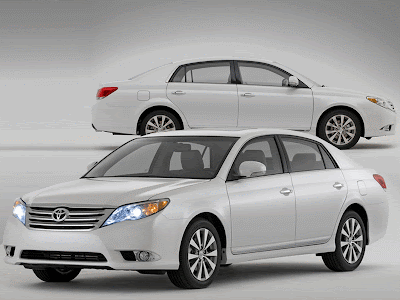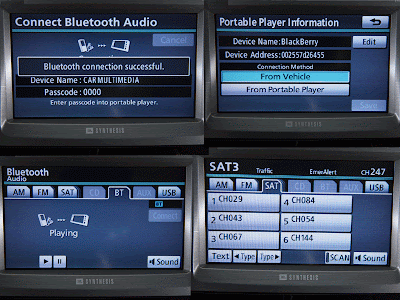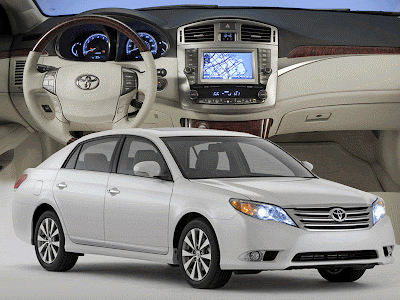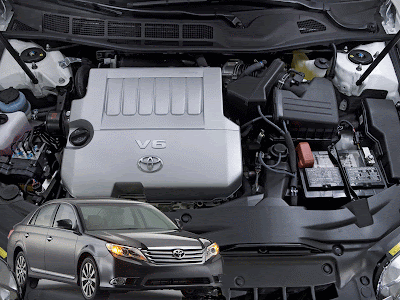
The Plymouth Voyager and Dodge Caravan minivans revolutionized family transportation when they were introduced back in 1983. Nevermind that Volkswagon had been selling people-friendly vans for decades, it was Chrysler's "magic wagons" that came to define the minivan for Americans. With decent car-based road manners, easy-access sliding doors and clever packaging, minivans quickly replaced the station wagon as our favored Wally World-bound chariots. Minivan sales peaked at more than 1 million sales in 2002, but the following year, customers discovered something else: The SUV.
The minivan has a chance at a comeback... cool or not.
Overnight, minivans and their drivers turned into punchlines – an emblem for those who'd given up on driving excitement. Despite the traditional minivan's utility, drivability and fuel efficiency, the masses flocked to Hummers and GMC Denalis, but the SUV's reign was short-lived. Skyrocketing fuel prices have made family-friendly crossovers the new hot commodity, but Toyota – even with its line of competent CUVs – hadn't given up on the minivan just yet. In fact, Toyota predicts that the minivan market will grow by 30 percent over the next few years (to about 600,000 units), as young families and empty-nesters once again discover the inherent merits of a car-based box with sliders. But while minivans are no doubt practical, they're far from cool.
The 2011 Toyota Sienna was designed to challenge that assumption.
Patterned after the F3R concept, the new Sienna apes the Honda Odyssey's square shoulders but grafts on a Venza-like nose and tail. There's something for everyone with five different trim levels, two different engines, front- or all-wheel drive, and even a sport-tuned SE edition. Yep, Toyota thinks the world is ready for a sporty minivan. They recently invited us down to sample their new range of people movers, and we spent a day driving them up and down the coast, along freeways and around neighborhoods, and even down one of Southern California's famed canyon roads, all in an effort to prove that the minivan is ready to be thrust back to the top.
When first approaching the 2011 Sienna, you're immediately taken with its width. The Toyota family face is spread wide across the low snout, the body is more muscular with high shoulders and hidden slider rails, and the tail is cleaned up with its large roof spoiler covering the relocated rear wiper. It's a clean, contemporary look that boasts an un-box-like drag coefficient of just .306. The van was designed at Calty, and all of the engineering and development work was done in Ann Arbor. Production will continue at the Princeton, Indiana plant that builds the current Sienna, making this an All-American effort. Toyota thinks it can sell 100,000 of them per year. On looks alone, ToMoCo probably has a good shot.
There will be five different trim levels when the Sienna goes on sale next February: Sienna (base), LE, XLE, Limited and SE. There are several detail differences to tell them apart. The grilles on the Sienna, LE and XLE have black bars with a lower chrome surround, while the Limited grille is all chrome. XLE and Limited get extra chrome bits and XLE, Limited and SE come standard with foglamps. The SE really stands out (below, middle) with a blacked out mesh grille, a front airdam, recontoured rear apron, rocker sill extensions, darkened chrome all around and clear taillight lenses. Although it's only been lowered a bit due to its stiffened coils and dampers, the SE's aero tweaks really emphasize its low, wide stance.




The other major trim-level tell will be the wheels. They're all alloys, ranging in size from 17 to 19 inches, and even the smallest fill those rounded wheel wells nicely. The base Sienna and LE get budget-looking five-spokes, XLE models wear shiny seven-spoke designs, Limited and AWD models sport sharp-looking polished ten-spokers and the SE gets a darkened six-spoke pattern. The AWD models really caught our attention because they were wearing the latest Bridgestone Turanza run-flats. During our driving, those run-flats were a bit of a revelation, riding and handling just like conventional tires. They promise much better performance when air levels drop, thanks in large part to their scalloped sidewalls that keep them cool.
As big as the exterior changes are, the interior is this van's main attraction. Although the third-generation Sienna has the same wheelbase and sits on the same platform as the outgoing model, it's actually a bit shorter overall, yet still manages to cram an extra two inches of interior length into the cabin. Cargo volume has gone up, with space behind the third, second and first rows measuring in at 39.1/87.1/150 cubic-feet respectively. It feels even bigger than that inside thanks to a new tri-tone color scheme that keeps everything above the beltline light and airy.
Despite the addition of a four-cylinder option for the first time, Toyota says it's reduced total Sienna vehicle combinations by a whopping 80 percent. Options lists will shrink as Toyota is going the Honda route of making the customer move up a trim level to get extra equipment. Despite that, there are even more combinations of trim levels, drivetrains and seating configurations than before.

Lowering the third row is now a one-motion affair, with a single handle pull bringing either portion of the 60/40 split bench up and over into the floor. A power option makes it even easier to make the seats disappear and reappear. We positioned ourselves back there for a spell and have to say, this is where minivans shine. Compared to a third row in an SUV, we wouldn't have nearly as many reservations about riding back there on long trips. Heck, the seats even recline now and getting to that comfy bench is a whole lot easier thanks to the new second row Tip-Up and Long-Slide feature.
Lounge Seating plus a 16.4-inch LCD turns the Sienna into a private theater on wheels.
However, the second row seats in this newest Sienna are probably going to get the lion's share of oohs and aahs. Whether in seven- or eight-seat variety, they have a long slide range of nearly 26 inches for great third row access or to allow parents room to stand in front of the seats as they buckle their kids in. The optional eighth seat is a foldable unit that easily pops out and fits into a clever storage cove on the driver's side of the rear cargo area. That brings up the one issue some people might have with the second row seats: They don't fold flat into the floor like the Chrysler Stow 'n Go system. When asked abut this seeming oversight, the Toyota reps were quick to explain their choice.
Anyone who has sat in the Chrysler's second row seats can tell you that they aren't the most comfortable place to be on long trips. The sacrifice in padding needed to get them to fold flat into the floor is noticeable even on short jaunts. Toyota thought long and hard about it and decided that people are in those seats more often than large objects occupying the cargo area. In short, Toyota's engineers say they chose passenger comfort over cargo loading ease. As if to put an exclamation point on that decision, Toyota now offers a Lounge Seating package on Limited models that features two ottoman equipped recliners -- similar to the rear thrones in the $408,000 Maybach 62.




Second- and third-row passengers can also enjoy an optional 16.4-inch dual-view LCD screen that unfolds from the headliner while dropping jaws. It can display two separate signals side-by-side or one single standard or widescreen program. Despite its large size, it doesn't block the driver's view out the back – we checked. That screen also adds A/V jacks to the back of the center console, a DVD player in the lower portion of the center stack and a remote control. There are optional wireless headsets too, that, with the addition of the Lounge Seating, turns the Sienna into a private theater on wheels.
The front seats are enlarged, multi-adjustable, supportive and comfortable. The Limited model adds a two-position memory function for the first time and between the seats you'll find a handy floor (purse) tray at the base of the center stack. Not all models include a center console, but those that do get a huge central compartment, cupholders and an optional rearward slider feature. All trim levels get a tri-zone AC system that's been painstakingly engineered to reduce sound from the fan and through the vents. The reps went on about a sophisticated system of phase-shifting noise cancellation, "Air Cap" ducts, and additional sound deadening material. We tried it out and have to admit it wasn't any louder (or quieter) than any other system we've used. The system is manual except on XLE and Limited, which get automatic climate control, and the HVAC controls are right where you'd expect them to be – well laid out along that signature dash swoop and easy to use.
Stylish as it might be, the swoop is there to give front seat occupants a "60/60" split of the space. By bisecting the area, it makes it feel like you are getting 60 percent of the space, whether you're in the driver or passenger seat. It actually works well in practice, especially on models with the floor console. The swoop is solid colored on most models, carbon fiber-esque on the SE and wood on the XLE and Limited, with the Limited variant getting a smart-looking leather and wood steering wheel as well. And to keep everyone safe, there are seven airbags and active headrests as part of the Sienna's pre-collision system, ABS, traction control, stability control, brake assist and electronic brake distribution.




Stereo systems are all AM/FM/MP3/CD and with XM-readiness, Bluetooth, auxilary audio jacks and USB ports standard on most models. The Limited gets an upgraded ten-speaker JBL system to itself, while XLE and Limited buyers can also add a voice-activated touch-screen DVD navigation system that takes the spot normally occupied by the stereo. That sat-nav system is a sixth-generation Denso unit that's incredibly intuitive and capable of understanding English, Spanish and French voice commands. You can even search by company or chain name, making it almost too easy to find the closest In-N-Out Burger. And that's not even the best part of the system.
The unit also displays Toyota's new Panorama backup camera feed, which offers an industry-first 180-degree view of what's behind the vehicle. It makes backing up and parking both easier and safer, with handy guidelines and steering-based projections projected on the screen to help you slot in perfectly. We did, however, find one parking lot with weathered lines and the system decided to basically create its own space for us diagonally across three spaces. It's not infallible, but the wide-view feed of what's behind you is terrific in most all conditions.
On vehicles with backup cams but no navigation, the image is displayed on the 3.5-inch multi-information display at the top center of the dash. That unit also displays clock, outside temp, HVAC info, open door indicators, cruise info and Eco Driving mode graphs. That Eco graph shows fuel consumption in a simple black and white bar graph that struck us as somewhat counterintuitive, with the white bar getting longer the harder you pressed on the accelerator. A minor quibble, but kind of odd given the high quality displays elsewhere. A front radar parking assist system is standard on Limited and optional on XLE, and the Limited also offers an optional Dynamic Radar Cruise Control that keeps a safe distance between you and traffic ahead.




The overhead console has an eyeglass holder, conversation mirror, the Safety Connect controls, power slider controls (standard on all but the base Sienna) and sunroof controls on vehicles so equipped. Limited models can actually be ordered with dual sunroofs. The dash features an upper and lower glove compartment, both of which should be big enough for most needs. Although these were preproduction cars, the materials felt good and featured graining that should keep them free of fingerprints a little better. The fit of some of the dash pieces was a little off, but we expect that to be fixed by the time the vans go into production early next year. The cloth material on the Sienna and LE models left a bit to be desired, but the cloth, leather and leatherette fitted to other trim levels felt good overall.
A hybrid Sienna might work its way into the mix, but Toyota's tight-lipped for now.
The gauges look essentially similar on all trim levels, with an overlapping combination meter design. The SE gets sporty-looking black on white units with red needles and there's a "Start/Stop" button on Limited models (and some XLEs) with Toyota's Smart Key System, allowing keyless entry at any port. Overall the interior is clever, versatile, functional and comfortable. Visibility is good and the color scheme really makes it feel even roomier inside. Controls and switches are intuitively placed and feel high quality for the most part. We even got used to that dash-mounted gearshifter in no time flat.
Behind that shifter is Toyota's new six-speed automatic transmission, which handled the tasks we asked of it well. Front- and all-wheel-drive Siennas are available with the carryover 266-horsepower, 3.5-liter V6. The bigger news is that Sienna and LE models can now be ordered with the Venza's four-cylinder engine. We thought the 187-hp, 2.7-liter unit might struggle to move the new Sienna (which has gained almost 100 pounds over the current generation), but it handled most duties just fine. Compared to the V6 mill, however, fuel economy of the four-pot isn't stellar. It still leads the class, though, clocking in at 19/26/22 mpg for city, highway and combined cycles respectively. But with the V6 models' similar ratings (18/24/20 for FWD models and 16/22/18 on AWD variants), the four-pot seems to be there just so Toyota can keep the entry-level 2011 Sienna below the current van's $24,600 starting price. A hybrid might eventually work its way into the mix, but for now the Toyota folks are tight-lipped.


The brakes felt strong and had good feedback, giving us a confidence that somehow made the whole vehicle feel lighter on its feet. We can't really say the same for the steering, however. Toyota is using an all-electric power steering system on the Sienna and although we like the fact that it reduces weight, complexity and cost, the brain behind it seems to get tripped up too often. It tries to predict conditions based on driver and sensor inputs, then constantly adjusts the ratio, with the net effect of creating an artificial feel that doesn't inspire much confidence when pushed – even a little bit. We know that most people won't be chucking their minivans through the twisties, but with the marketing emphasis on this being a sporty, cool minivan, we'd like a bit more from this system. Too bad they all can't have the SE setup.
The SE takes the same basic components and stiffens everything up with a quick software update that makes the vehicle much more driver-oriented. Coupled with the suspension changes that make up the SE package, we can honestly say that the SE was an eye-opener. All of the new Sienna models handled and rode reasonably well with very little body roll, squat or dive. The SE, on the other hand, felt almost tossable, although bumps were less dampened. How'd Toyota pull it off? Chief Engineer Kazuo Mori is an autocrosser.
After 17 years stuck designing commercial vehicles and minivans instead of his favored sports cars, Mori-san says he finally decided to hide a sports car under a minivan to slip it past the guys at corporate. He says he had to fight to get the SE into the lineup as the higher ups didn't think it made sense. Of course, it doesn't make sense. It's a minivan with carbon fiber bits inside, a lowered stiff suspension and a body kit. And that's exactly why we like it. Even if it doesn't sell in any significant quantity, the mere fact that it exists automatically elevates the entire range. While we'd probably choose a Sienna Limited for its lounge seats, widescreen monitor, dual sunroofs and all the bells and whistles, we would still want the SE's stiffer suspension and firmer steering as an option.


When Toyota told us it was hoping to be a major player in a revitalized minivan market, we didn't really know what to think. While we understand the inherent goodness of the minivan as a family hauler, we weren't privy to Toyota's research about younger families. They don't necessarily see "minivan" as a bad word. They want functionality above all else, but wouldn't mind a bit more style. When Toyota told us they hoped to make the minivan cool, we thought they may have dipped too deeply into the holiday eggnog.
Then we saw the 2011 Sienna at its LA Auto Show unveiling in November and decided they had a chance. After driving the whole lineup, including the sport tuned SE, we were impressed with the Sienna's composed road manners and surprising performance, even with the new four-cylinder base engine. Prices haven't been announced, but if they start at less than $25,000 as anticipated, Toyota has a good chance of selling the 100,000 Siennas it's predicting. And having the SE in the lineup might just be the ace up its sleeve, proving that the minivan has a chance at a comeback... cool or not.
[Source: Autoblog]















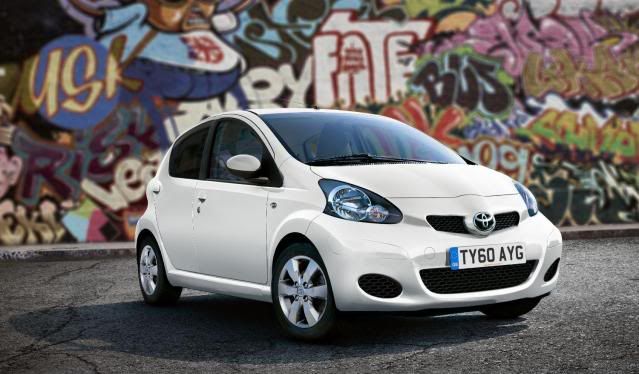
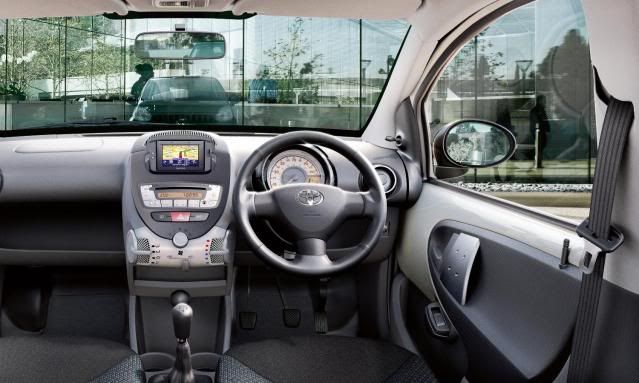

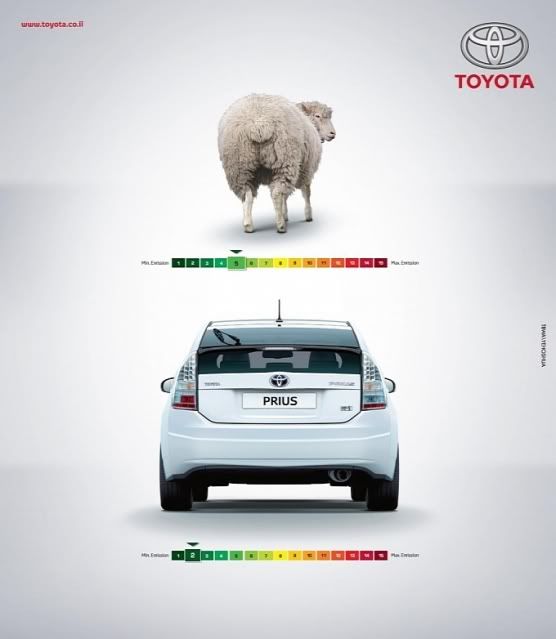






 Mob Toyota Sports Cars Concept
Mob Toyota Sports Cars Concept
















